Carsten Jentsch
Identifying economic narratives in large text corpora -- An integrated approach using Large Language Models
Jun 18, 2025Abstract:As interest in economic narratives has grown in recent years, so has the number of pipelines dedicated to extracting such narratives from texts. Pipelines often employ a mix of state-of-the-art natural language processing techniques, such as BERT, to tackle this task. While effective on foundational linguistic operations essential for narrative extraction, such models lack the deeper semantic understanding required to distinguish extracting economic narratives from merely conducting classic tasks like Semantic Role Labeling. Instead of relying on complex model pipelines, we evaluate the benefits of Large Language Models (LLMs) by analyzing a corpus of Wall Street Journal and New York Times newspaper articles about inflation. We apply a rigorous narrative definition and compare GPT-4o outputs to gold-standard narratives produced by expert annotators. Our results suggests that GPT-4o is capable of extracting valid economic narratives in a structured format, but still falls short of expert-level performance when handling complex documents and narratives. Given the novelty of LLMs in economic research, we also provide guidance for future work in economics and the social sciences that employs LLMs to pursue similar objectives.
ttta: Tools for Temporal Text Analysis
Mar 04, 2025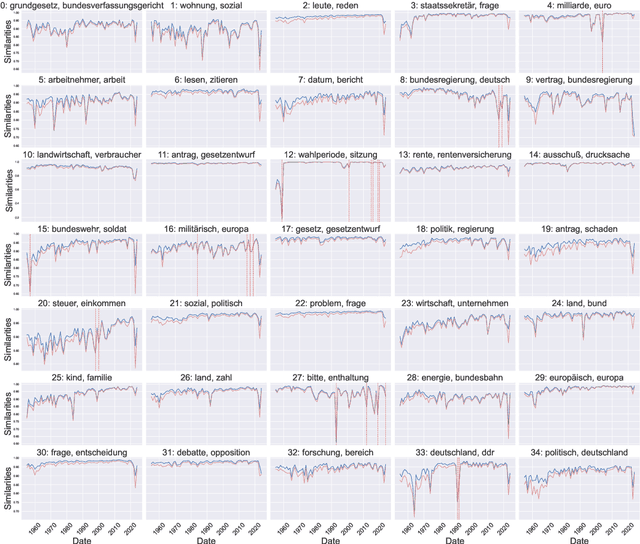
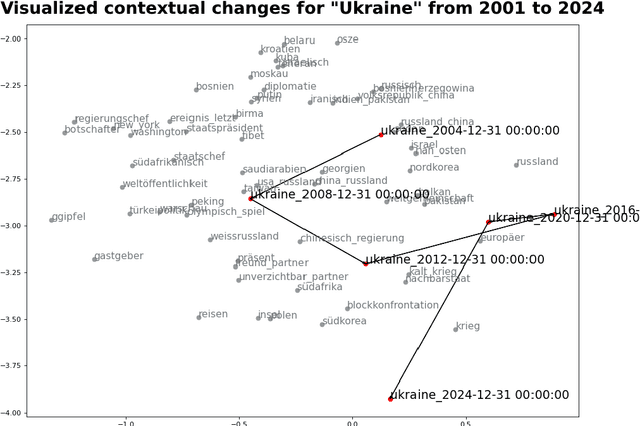
Abstract:Text data is inherently temporal. The meaning of words and phrases changes over time, and the context in which they are used is constantly evolving. This is not just true for social media data, where the language used is rapidly influenced by current events, memes and trends, but also for journalistic, economic or political text data. Most NLP techniques however consider the corpus at hand to be homogenous in regard to time. This is a simplification that can lead to biased results, as the meaning of words and phrases can change over time. For instance, running a classic Latent Dirichlet Allocation on a corpus that spans several years is not enough to capture changes in the topics over time, but only portraits an "average" topic distribution over the whole time span. Researchers have developed a number of tools for analyzing text data over time. However, these tools are often scattered across different packages and libraries, making it difficult for researchers to use them in a consistent and reproducible way. The ttta package is supposed to serve as a collection of tools for analyzing text data over time.
SpeakGer: A meta-data enriched speech corpus of German state and federal parliaments
Oct 23, 2024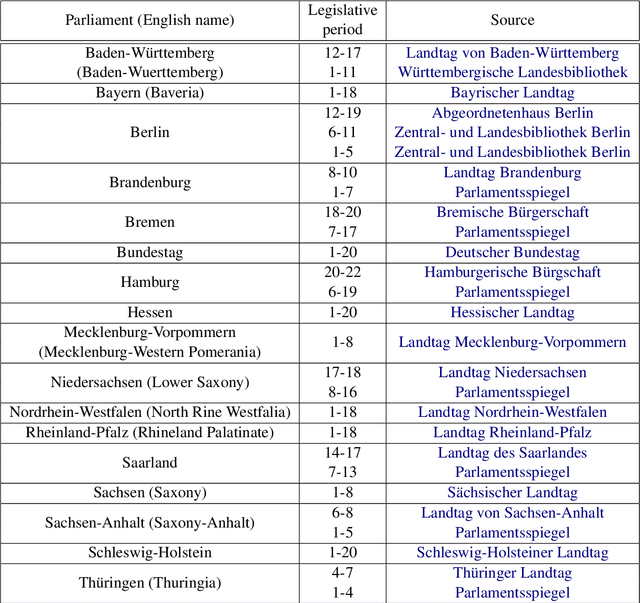
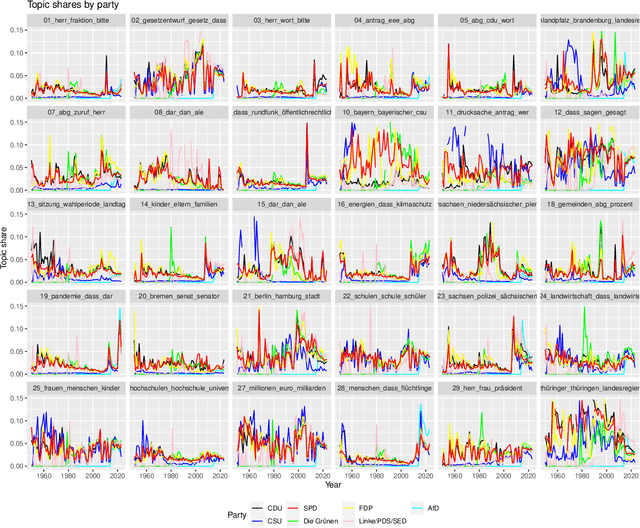
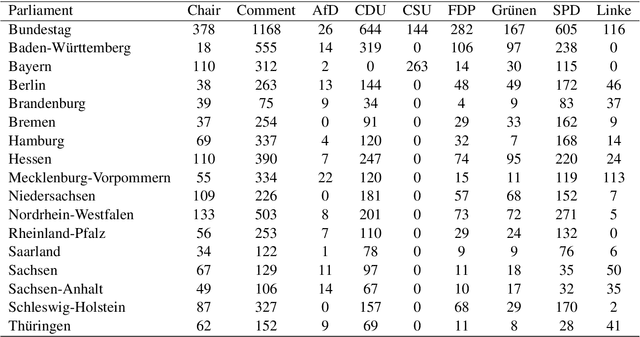
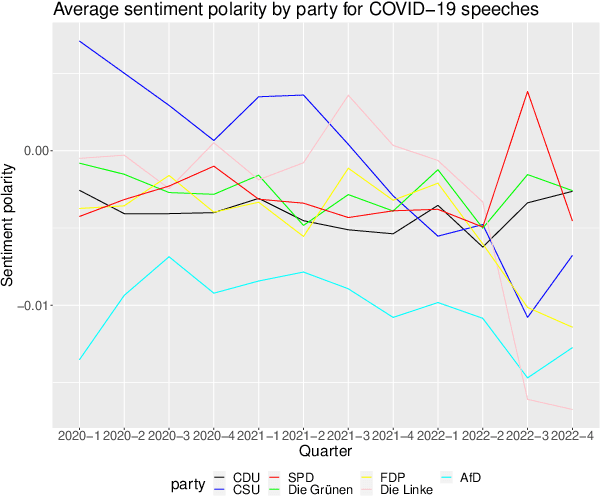
Abstract:The application of natural language processing on political texts as well as speeches has become increasingly relevant in political sciences due to the ability to analyze large text corpora which cannot be read by a single person. But such text corpora often lack critical meta information, detailing for instance the party, age or constituency of the speaker, that can be used to provide an analysis tailored to more fine-grained research questions. To enable researchers to answer such questions with quantitative approaches such as natural language processing, we provide the SpeakGer data set, consisting of German parliament debates from all 16 federal states of Germany as well as the German Bundestag from 1947-2023, split into a total of 10,806,105 speeches. This data set includes rich meta data in form of information on both reactions from the audience towards the speech as well as information about the speaker's party, their age, their constituency and their party's political alignment, which enables a deeper analysis. We further provide three exploratory analyses, detailing topic shares of different parties throughout time, a descriptive analysis of the development of the age of an average speaker as well as a sentiment analysis of speeches of different parties with regards to the COVID-19 pandemic.
* 10 pages, 3 figures
Zeitenwenden: Detecting changes in the German political discourse
Oct 23, 2024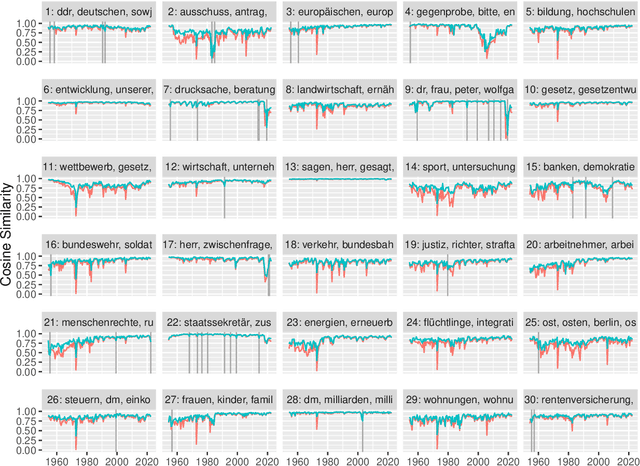
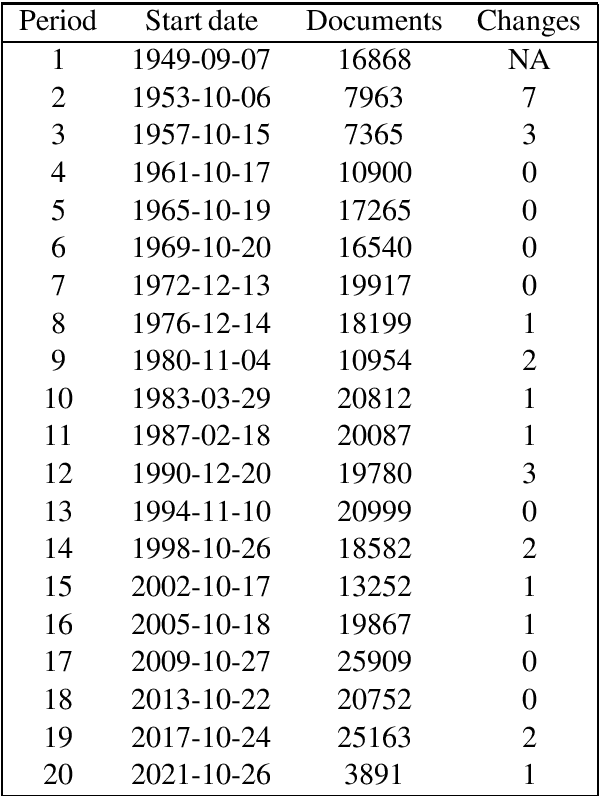
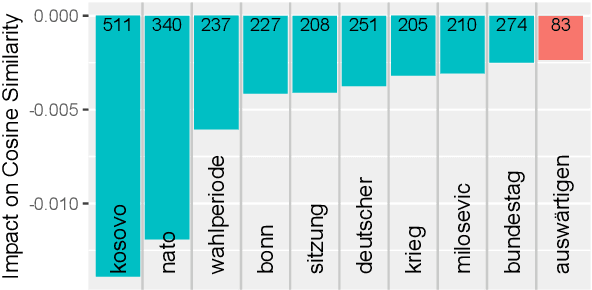
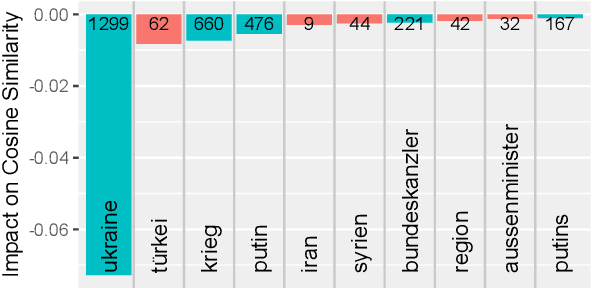
Abstract:From a monarchy to a democracy, to a dictatorship and back to a democracy -- the German political landscape has been constantly changing ever since the first German national state was formed in 1871. After World War II, the Federal Republic of Germany was formed in 1949. Since then every plenary session of the German Bundestag was logged and even has been digitized over the course of the last few years. We analyze these texts using a time series variant of the topic model LDA to investigate which events had a lasting effect on the political discourse and how the political topics changed over time. This allows us to detect changes in word frequency (and thus key discussion points) in political discourse.
* 7 pages, 6 figures
AR-Sieve Bootstrap for the Random Forest and a simulation-based comparison with rangerts time series prediction
Oct 01, 2024
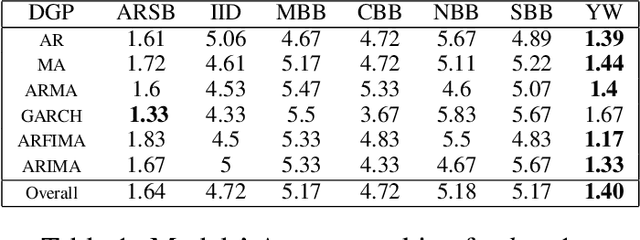
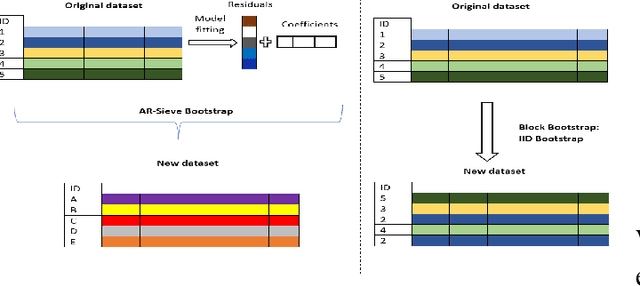

Abstract:The Random Forest (RF) algorithm can be applied to a broad spectrum of problems, including time series prediction. However, neither the classical IID (Independent and Identically distributed) bootstrap nor block bootstrapping strategies (as implemented in rangerts) completely account for the nature of the Data Generating Process (DGP) while resampling the observations. We propose the combination of RF with a residual bootstrapping technique where we replace the IID bootstrap with the AR-Sieve Bootstrap (ARSB), which assumes the DGP to be an autoregressive process. To assess the new model's predictive performance, we conduct a simulation study using synthetic data generated from different types of DGPs. It turns out that ARSB provides more variation amongst the trees in the forest. Moreover, RF with ARSB shows greater accuracy compared to RF with other bootstrap strategies. However, these improvements are achieved at some efficiency costs.
Prototypes as Explanation for Time Series Anomaly Detection
Jul 04, 2023



Abstract:Detecting abnormal patterns that deviate from a certain regular repeating pattern in time series is essential in many big data applications. However, the lack of labels, the dynamic nature of time series data, and unforeseeable abnormal behaviors make the detection process challenging. Despite the success of recent deep anomaly detection approaches, the mystical mechanisms in such black-box models have become a new challenge in safety-critical applications. The lack of model transparency and prediction reliability hinders further breakthroughs in such domains. This paper proposes ProtoAD, using prototypes as the example-based explanation for the state of regular patterns during anomaly detection. Without significant impact on the detection performance, prototypes shed light on the deep black-box models and provide intuitive understanding for domain experts and stakeholders. We extend the widely used prototype learning in classification problems into anomaly detection. By visualizing both the latent space and input space prototypes, we intuitively demonstrate how regular data are modeled and why specific patterns are considered abnormal.
Lex2Sent: A bagging approach to unsupervised sentiment analysis
Sep 26, 2022
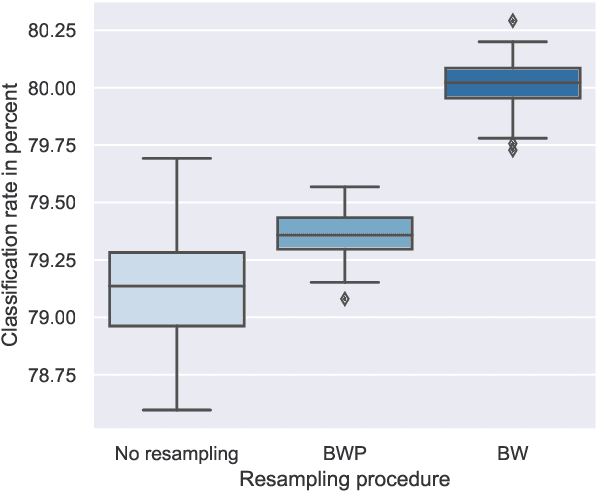


Abstract:Unsupervised sentiment analysis is traditionally performed by counting those words in a text that are stored in a sentiment lexicon and then assigning a label depending on the proportion of positive and negative words registered. While these "counting" methods are considered to be beneficial as they rate a text deterministically, their classification rates decrease when the analyzed texts are short or the vocabulary differs from what the lexicon considers default. The model proposed in this paper, called Lex2Sent, is an unsupervised sentiment analysis method to improve the classification of sentiment lexicon methods. For this purpose, a Doc2Vec-model is trained to determine the distances between document embeddings and the embeddings of the positive and negative part of a sentiment lexicon. These distances are then evaluated for multiple executions of Doc2Vec on resampled documents and are averaged to perform the classification task. For three benchmark datasets considered in this paper, the proposed Lex2Sent outperforms every evaluated lexicon, including state-of-the-art lexica like VADER or the Opinion Lexicon in terms of classification rate.
Random boosting and random^2 forests -- A random tree depth injection approach
Sep 13, 2020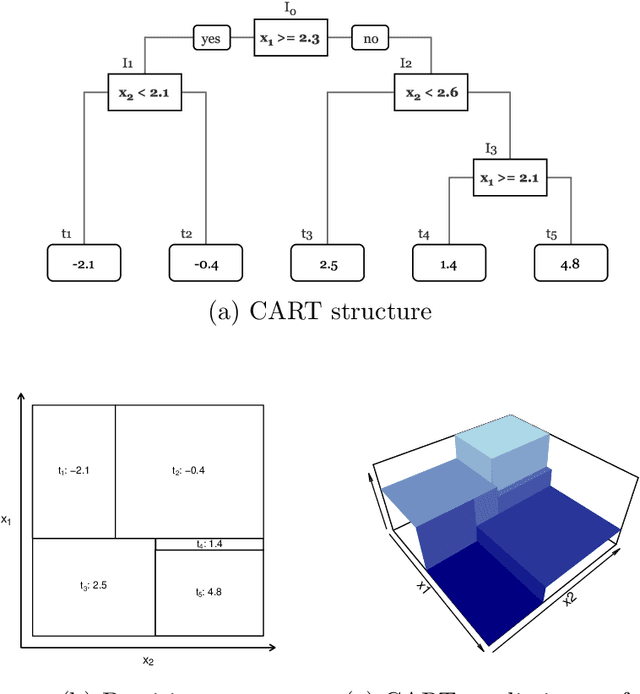

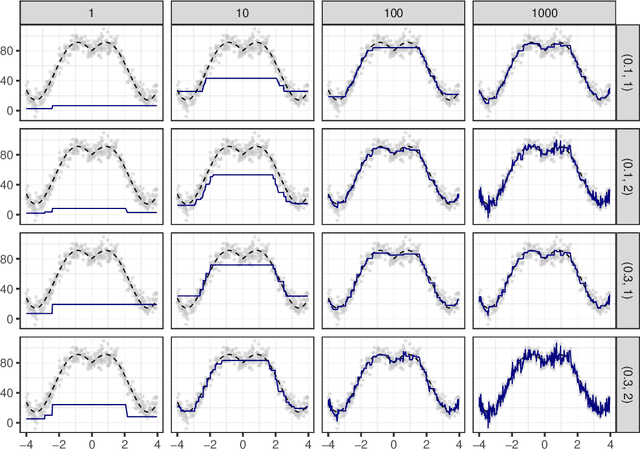

Abstract:The induction of additional randomness in parallel and sequential ensemble methods has proven to be worthwhile in many aspects. In this manuscript, we propose and examine a novel random tree depth injection approach suitable for sequential and parallel tree-based approaches including Boosting and Random Forests. The resulting methods are called \emph{Random Boost} and \emph{Random$^2$ Forest}. Both approaches serve as valuable extensions to the existing literature on the gradient boosting framework and random forests. A Monte Carlo simulation, in which tree-shaped data sets with different numbers of final partitions are built, suggests that there are several scenarios where \emph{Random Boost} and \emph{Random$^2$ Forest} can improve the prediction performance of conventional hierarchical boosting and random forest approaches. The new algorithms appear to be especially successful in cases where there are merely a few high-order interactions in the generated data. In addition, our simulations suggest that our random tree depth injection approach can improve computation time by up to 40%, while at the same time the performance losses in terms of prediction accuracy turn out to be minor or even negligible in most cases.
Improving Reliability of Latent Dirichlet Allocation by Assessing Its Stability Using Clustering Techniques on Replicated Runs
Feb 14, 2020
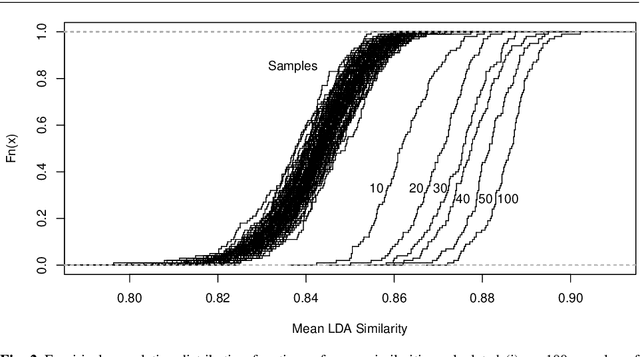
Abstract:For organizing large text corpora topic modeling provides useful tools. A widely used method is Latent Dirichlet Allocation (LDA), a generative probabilistic model which models single texts in a collection of texts as mixtures of latent topics. The assignments of words to topics rely on initial values such that generally the outcome of LDA is not fully reproducible. In addition, the reassignment via Gibbs Sampling is based on conditional distributions, leading to different results in replicated runs on the same text data. This fact is often neglected in everyday practice. We aim to improve the reliability of LDA results. Therefore, we study the stability of LDA by comparing assignments from replicated runs. We propose to quantify the similarity of two generated topics by a modified Jaccard coefficient. Using such similarities, topics can be clustered. A new pruning algorithm for hierarchical clustering results based on the idea that two LDA runs create pairs of similar topics is proposed. This approach leads to the new measure S-CLOP ({\bf S}imilarity of multiple sets by {\bf C}lustering with {\bf LO}cal {\bf P}runing) for quantifying the stability of LDA models. We discuss some characteristics of this measure and illustrate it with an application to real data consisting of newspaper articles from \textit{USA Today}. Our results show that the measure S-CLOP is useful for assessing the stability of LDA models or any other topic modeling procedure that characterize its topics by word distributions. Based on the newly proposed measure for LDA stability, we propose a method to increase the reliability and hence to improve the reproducibility of empirical findings based on topic modeling. This increase in reliability is obtained by running the LDA several times and taking as prototype the most representative run, that is the LDA run with highest average similarity to all other runs.
 Add to Chrome
Add to Chrome Add to Firefox
Add to Firefox Add to Edge
Add to Edge